1963 – the year that changed motorcar history
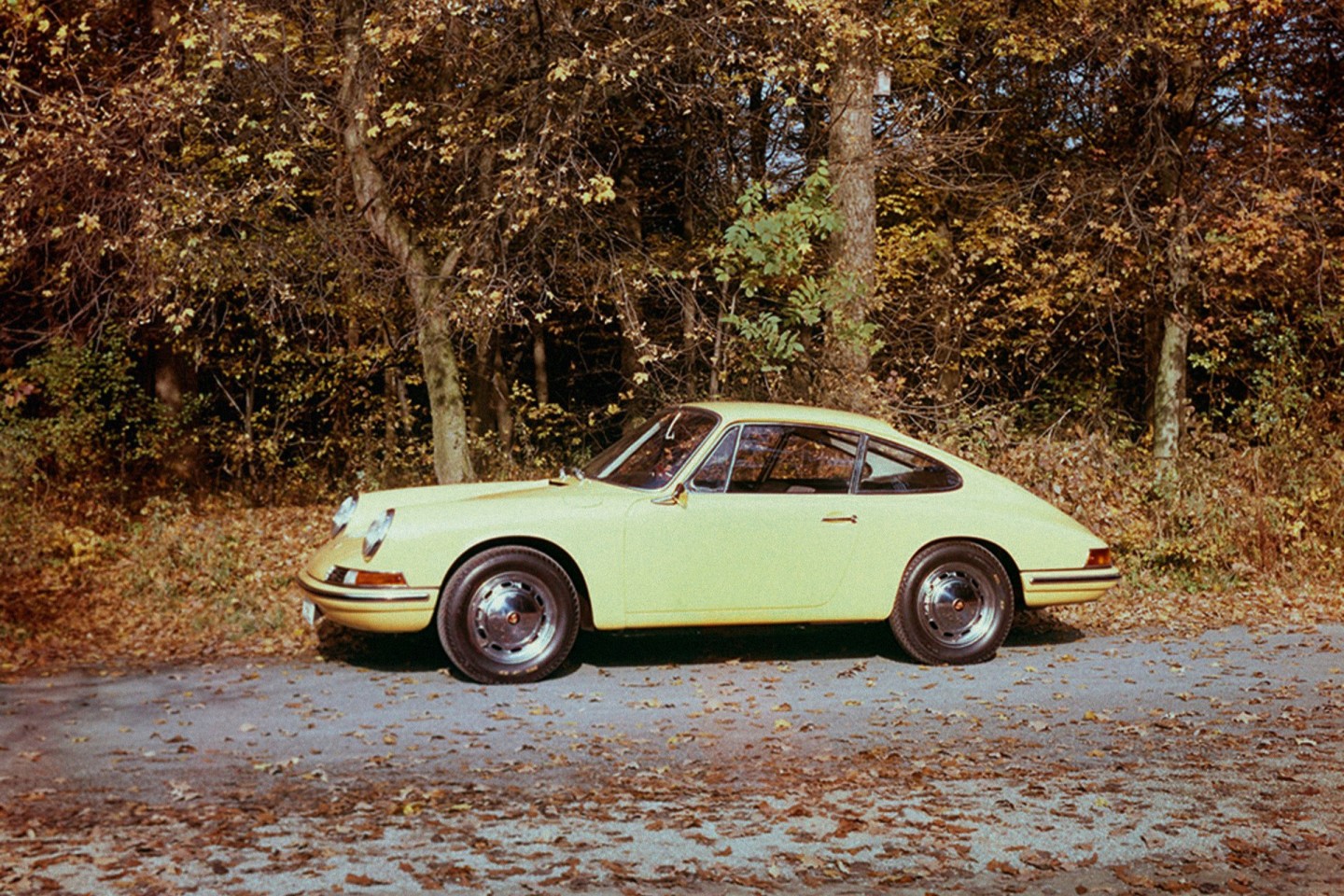
Roula Khalaf, Editor of the FT, selects her favourite stories in this weekly newsletter.
Porsche 911: the soul of Stuttgart
When Porsche revealed the 911 at the 1963 Frankfurt motor show, it wasn’t called the 911 but the 901. But Peugeot had a trademark on all cars with the X0X number moniker and wouldn’t allow Porsche to use the 901 name. The German carmaker let the zero go and, eight incarnations later, the 911 is still here, the talisman of Porsche.
Much, of course, has changed over 60 years, but the design fundamentals of the car made at the company’s Zuffenhausen factory in Stuttgart remain the same. A playful, friendly, frog-like face with round headlights mounted on the front wings, a bonnet that tapers down to the bumper like a closed lip with no grille to suck in air (no need for a grille to cool things down because the engine is in the boot). That engine in the back provides a low centre of gravity; the lightweight front end is ridiculously agile (car obsessive Jay Leno describes its handling as being like “a scalpel”). It is a car that is relatively easy to drive at low speeds (flex it on the way to the supermarket), but requires the most skilful of drivers if you want to push it on a track. Overcook it and you’ll fly. It’s “Beauty and the Beast”, as Stefan Büscher, CEO of Porsche Lifestyle Group, puts it.
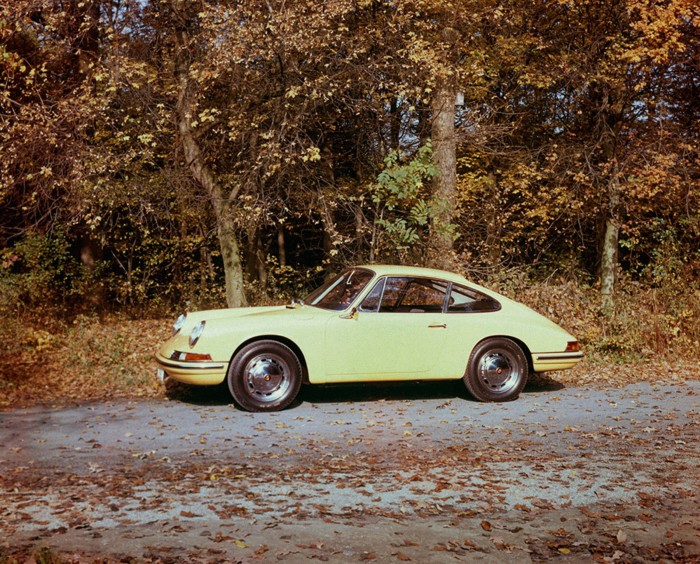
Owners of the car have included Steve McQueen, Bill Gates, Tom Cruise, Rihanna, Jerry Seinfeld and LeBron James: an eclectic bunch. Will Smith drove a 911 (964) Turbo in Bad Boys; Robert Redford a yellow 1968 911T in Downhill Racer; Jeff Bridges faced off in one against James Woods’ Ferrari 308 in 1984’s Against All Odds; and McQueen piloted his own 911S on his way to Le Mans in the opening scene of the eponymous 1971 film. The 911 is also a legend of the real racetrack, winning the Monte Carlo Rally three times in a row between 1968 and 1970, and being the basis of the 935 that won the 24 Hours of Le Mans in 1979.
Its origins, though, are less exalted. Ultimately the 911 is a squashed-down Volkswagen Beetle. Before the second world war, Porsche’s founder Ferdinand Porsche was contracted by Hitler to design a car that would be affordable for the German people. He created the Beetle (though Volkswagen was successfully sued for copyright infringement by the designer Béla Barényi in 1955), with an air-cooled rear engine and room for four or five to sit inside.
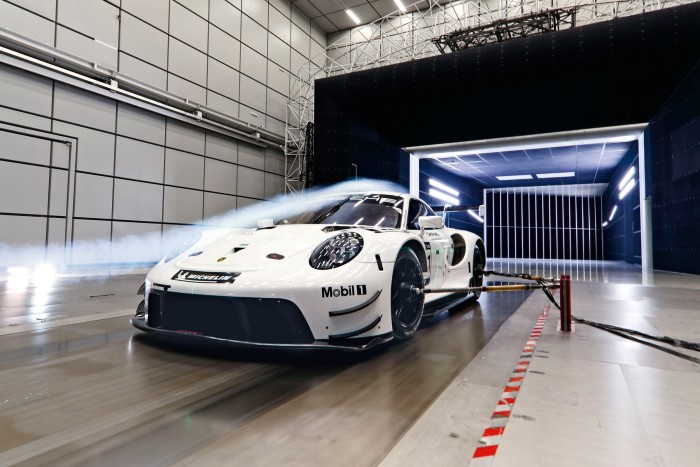
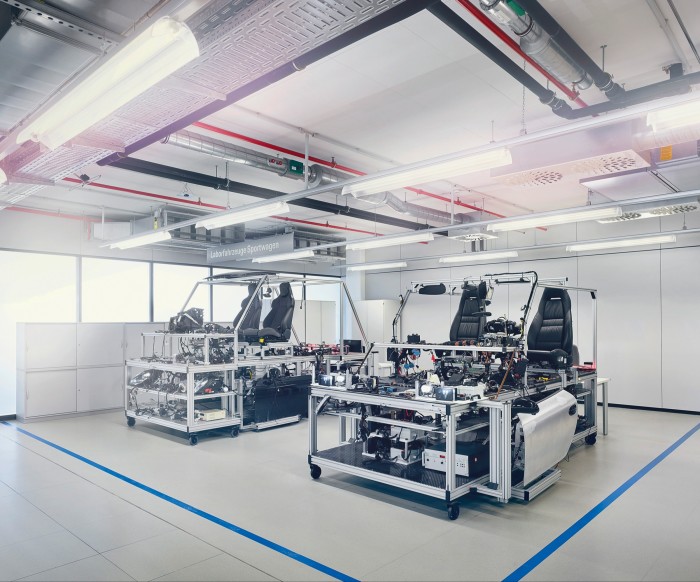
Only 200 or so Beetles were made before the war started and it wasn’t until 1947 that scaled-up civilian production of the car began. But back in 1939 Ferdinand Porsche designed a racing version of the Beetle intended to be driven in the Berlin to Rome rally. The rally never took place, but from this smoothed-down version the 356 (arguably the first Porsche proper, and the one that Kelly McGillis drives to chase down Tom Cruise in Top Gun) was developed. Back then, it was by no means a given that Porsche saw itself as a sports-car maker. “Ferdinand’s son Ferry was really exploring different roads,” says Michael Mauer, chief designer at Porsche since 2004. “Should it be a more sedan-like car? External designers were involved. In the end it was Ferry who just sat back from all these proposals. None convinced him. And then he asked his son [the designer Ferdinand Alexander] and the 911 was born.” The original had a top speed of 130.5mph and could do 0-62mph in 9.1 seconds.
In comparison with other look-at-me, look-at-me, look-at-me-now sports cars, it was understated, says Mauer: “Part of the Porsche sports cars’ DNA is that they are not aggressive in comparison to maybe Corvettes or Ferraris. Porsche was always, let’s say, a little bit humble. I think that this attracts a certain group of customers. In comparison to Lamborghini, Ferrari, Aston Martin it’s not as loud, but if you push all the buttons I would still say it’s among the fastest, or maybe even the fastest. And I think this is part of our brand DNA. It’s not about showing yourself off. That’s not what Porsche is about.”
Less well-known about the 911 is that Porsche very nearly retired it back in the 1970s. CEO Ernst Fuhrmann made plans to replace the model with the front-engined V8 928 (the one driven by Tom Cruise in Risky Business) with pop-up headlights such as you might have found on a Lotus or Ferrari or Lamborghini around that time. With the lights folded in it looked more shark (fitting the spirit of the 1980s) than frog and it was a comfortable grand tourer rather than an edge-of-your-seat sports car. In the end, sales of the 911 remained stronger than the 928, which was finally axed in 1995.
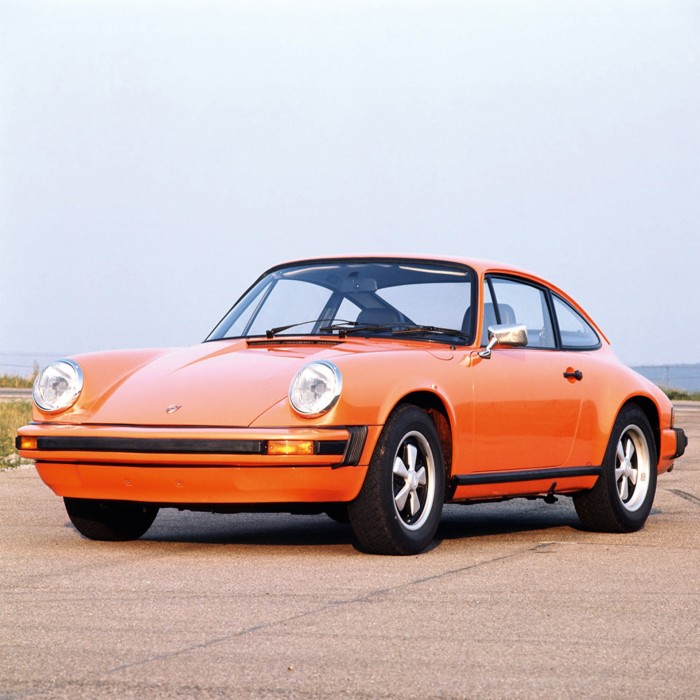
Had Porsche gone the other way and killed off the 911, what might Porsche’s fleet of cars look like now? “That would have had a big impact,” says Mauer. “First of all, I think the 928 is, among a few cars, a great symbol for how advanced designers were thinking. It had integrated bumpers; the steering column and the instrument panel were connected so that when you adjusted the steering column, the instrument dial would also move. In many cars today, still, if you move the steering wheel you find that you can’t see the dials any more. But it was maybe too modern. Luckily [retiring the 911] didn’t happen because a lot of elements from a 911 would have gone. Maybe then the Cayenne and the Panamera would have been more radical, and I would have had the question mark over whether this is right for Porsche. Because I think the brand should never stand and never stood for the extremely radical approach.”
The Porsche faithful have proved resistant to radical change over the years. Sometimes they’ve lost, sometimes they’ve won. It took until 1997 to replace the 911’s air-cooled engine with a more efficient liquid-cooled unit. Fans of the air-cooled engine objected. Porsche stood its ground. That 1997 model also featured controversial headlamps that abandoned the iconic circular style of the 911; derived from the headlamp used on the Boxster, they were mocked for looking like a fried egg. The next incarnation of the 911 in 2004 saw the return of the circular headlamp. (Though, as an important aside, the introduction of the lower-priced Boxster in the mid-1990s had the virtue of saving the company, as did following the advice of Japanese consultancies about sharing parts across models.) When Porsche announced that it would move into SUVs with the Cayenne in the early 2000s many said that the brand had compromised its soul. In 2022 Porsche sold 95,600 Cayennes and 86,700 Macans (the smaller SUV), with the 911 topping out the brand’s sports car sales at 40,400. If the 911 is the soul of Porsche, the Cayenne is its not-so-secret ingredient.
As to an electric 911, Porsche has already set out its stall in the EV world with the Taycan. It will continue to make combustion versions of the 911 for at least the next 10 years, says the company’s chief financial officer Lutz Meschke, but next up will be a hybrid then a full-electric version. One of the design issues facing car brands is what to do about the front grille in their new electric models. For many brands, that grille has been a key part of their design DNA. Because the 911 and its rear-situated engine has never needed a grille, and because its signature shape has been carried over into Porsche’s front-engined cars, it’s well placed to move into the electric era. “Other companies are struggling a bit,” says Mauer, not a little smugly. “The big grille is a symbol for the old world.”

Mauer’s own 911 is painted an understated grey but the design possibilities for customisation are legion. There are 118 shades of paint available for the car, but if you want to go beyond these, the Sonderwunsch (“special request”) department can have a colour tailored for you. In fact, says the vice president of individualisation and classic, Alexander Fabig, if your pockets are deep enough you can have your Porsche customised inside and out in pretty much any colour or fabric – whether you are buying a new model or want to adapt a classic car. “I always say the limit would be if someone asks us to put a Ferrari Testarossa spoiler on the 911; we wouldn’t do it,” laughs Fabig.
To mark the 911’s 60th anniversary, Porsche has created a limited S/T edition of 1,963 cars aimed at purists (from £254,000; for an additional £10,400 you can throw in a 60th anniversary 1-911 S/T chronograph watch). Unlike most modern 911s it has a manual gearstick. It is extremely light with the front bonnet, roof, front wings and doors made of carbon-fibre-reinforced plastic and magnesium wheels. According to Porsche it “unites the strength of the 911 GT3 with touring package and the 911 GT3 RS”. If you are already a 911 aficionado you’ll know what that means. For the rest of us, perhaps 0-62 in 3.7 seconds and a top speed of 186mph will suffice. TIM AULD
Aston Martin DB5: the secret agent’s choice
Also unveiled at the Frankfurt Motor Show in 1963 was the Aston Martin DB5. The car shot to stardom in 1964 as James Bond’s motor in the film Goldfinger, and has remained a design classic ever since. The film’s producer Cubby Broccoli had wanted Bond to drive an E-Type Jaguar, but Jaguar wouldn’t lend the cars. Set designer Ken Adam convinced Aston Martin to come on board, starting a relationship that is now in its sixth decade.
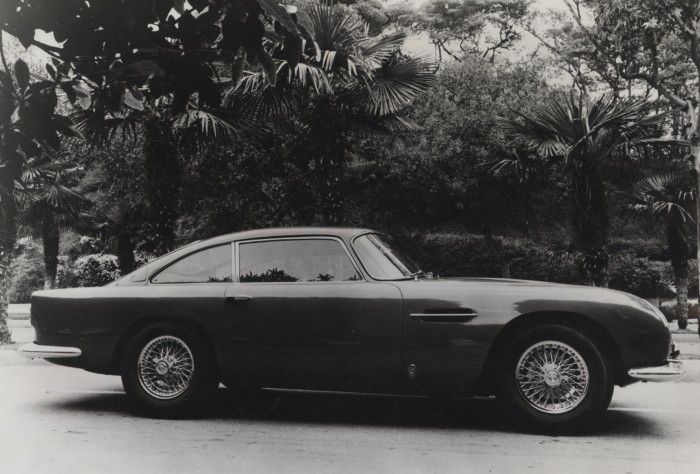
“It was simply made to be distinguished and beautiful – that was [Aston Martin’s then owner] David Brown’s remit,” says Marek Reichman, chief creative officer of Aston Martin. “It became part of pop culture – a beautiful-looking car driven by an exotic character in the movie, and the DB cars went on to be the choice of royals and pop stars,” he adds, pointing to a picture in his office of Mick Jagger sitting cross-legged in front of his DB6.
The car’s “Superleggera” tubular frame overlaid with aluminium bodywork was designed by the Italian coachbuilder Carrozzeria Touring, while Polish engineer Tadek Marek engineered its four-litre twin-cam straight-six engine. Producing 282bhp, the DB5 could reach 60mph in 7.1 seconds and a top speed of 148mph. Slightly slower than the Jaguar E-type (150mph) and double the price when new – £4,248 – the DB5 was a rarer sight in the 1960s. Fewer than 900 saloon examples were built at Aston Martin’s Newport Pagnell works between 1963 and 1965, compared with tens of thousands of E-type Series 1s. Only 65 DB5s had the optional Vantage engine, which developed 314bhp and could top out at 150mph.

“It’s the Birkin or Kelly bag of the automotive world – there’s simply nothing like it,” Reichman says. “And there are brilliant bags now, just as there are brilliant cars, but it sits as an icon in exactly the same way.” Its simple geometric styling, subtle rear fender fins and clean, functional cockpit layout defined the DB5, building on the design of the DB4 that went before it. “It’s almost like a plane fuselage,” he says. “There’s no complication whatsoever. The door creates a sharp line across the body – there’s no separate sill section – and in that way, it’s very modern as well.”
A world away from the cramped and sometimes claustrophobic cabins of many 1960s sports cars, the DB5 was built for touring in comfort. “It was never introduced as a racing car because it has a long chassis, which makes the ride more comfortable,” says Reichman. “It was designed for beauty – it wasn’t necessarily designed for performance.”
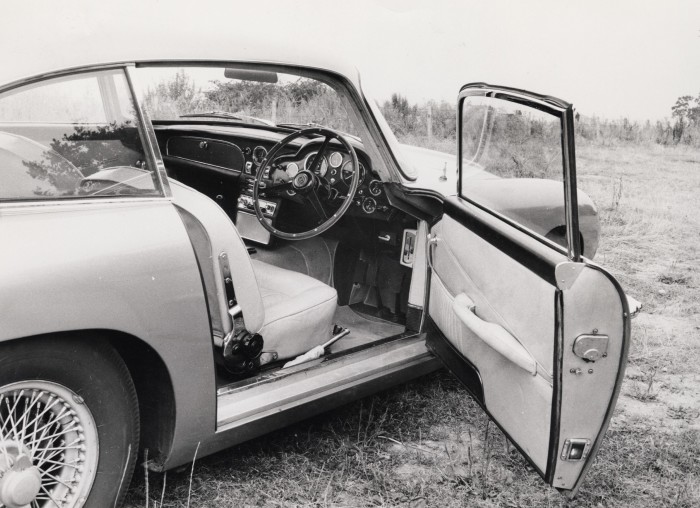
More grand tourer than supercar, the DB5 is still a perfectly comfortable cruiser – it’s easy to imagine doing a long-distance drive in one, although few will have the chance to do so these days given their value. Cars closely matching Bond’s DB5 can command millions at auction. In 2019, one of three surviving cars commissioned for the early Bond films was sold by RM Sotheby’s for $6.4mn at Pebble Beach, while a replica DB5 built for the latest film No Time To Die was sold by Christie’s in 2022 for £2.92mn.
While values are lower for cars without the Bond provenance, DB5s still command a premium. “The DB5 became part of the visual language of being cool,” says Reichman. “Once you have that as a status, you can’t help but admire it.”
A fully restored 1965 Aston Martin DB5 is for sale for £875,000 at hiltonandmoss.com RORY FH SMITH
Jeep Wagoneer: the birth of the SUV
Though it has dominated the SUV market since the 1970s, the Range Rover was not the original sports utility vehicle. Arriving six years before it, on the other side of the Atlantic, came the Jeep Wagoneer in 1963, a car that blurred the boundaries between a utilitarian off-roader and a comfortable, capable road car.
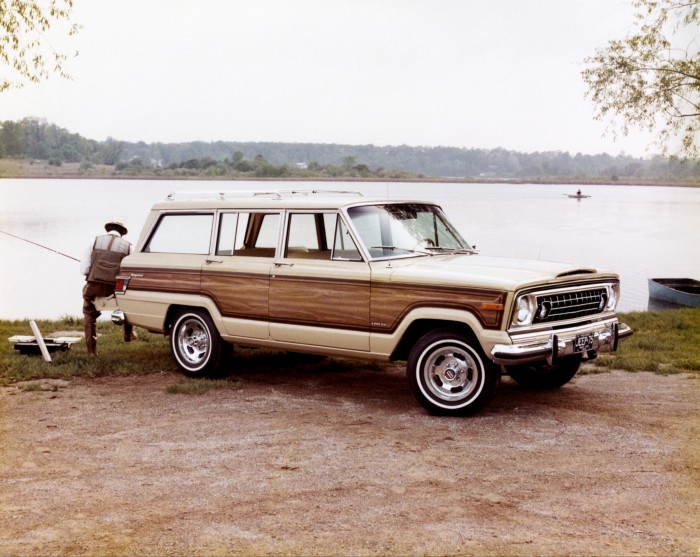
“Everything of its kind was really for farmers or the military when the Jeep Wagoneer showed up as a luxury device to take your family to the countryside,” says Ralph Gilles, chief design officer of Stellantis, which now owns Jeep. “And that was exactly what happened in the Hamptons outside New York, in northern Michigan or wherever you were in America. A lot of people had cabins or boats that they would enjoy on the weekends and they would load the family up and go for an adventure.”
Equipped with power steering, power brakes, automatic transmission, independent front suspension, a radio and a heater, the Wagoneer married go‑anywhere ability with luxury – a formula that would evolve and become increasingly popular over the years. For the car-buying public, it took the American dream to the next level. Making a guest appearance in hundreds of movies over the decades, the Wagoneer represented the bright side of Americana. “Everyone remembers the Wagoneer – everyone had a story, some episode in their life where the Wagoneer played a role,” says Gilles.
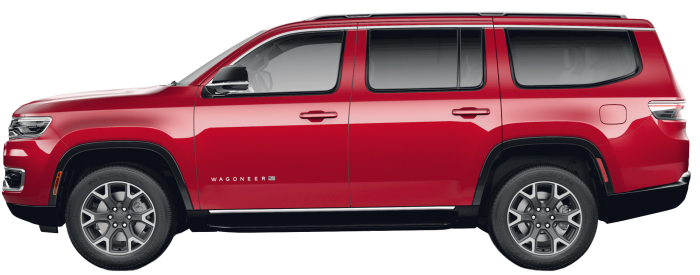
Created in the golden age of US car design when size, excess, ornamentation and chrome reigned supreme, the original was conceived by American industrial designer Brooks Stevens and powered by a 3.8-litre, six-cylinder Tornado engine that produced 140bhp. The design, with its boxy shape, upstanding grille and wood-grain panelling, survived largely unchanged until 1991. “Part of the appeal was the ostentatious part – it wasn’t shy to be bold. The wood grain on the side was one of the ways that you knew you had the top of the line,” says Gilles. “It had a little outrageousness to it but nothing that would embarrass you – you could pull up at any country club and feel smart.”
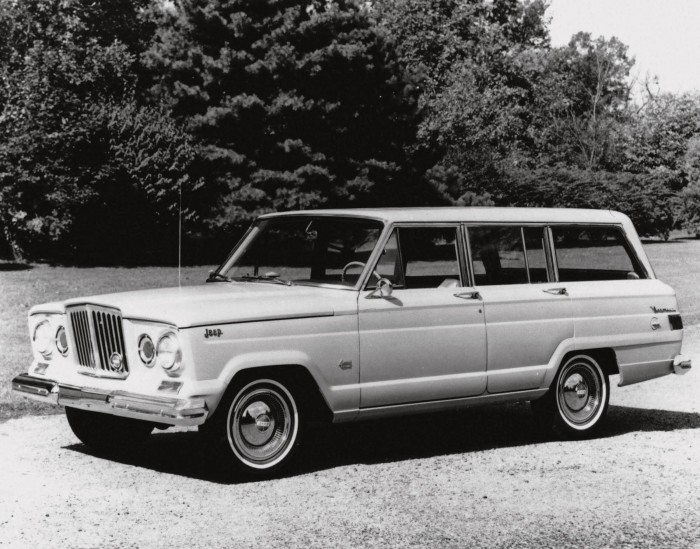

Reviews at the time were favourable. With a top speed of around 90mph, the original Wagoneer could happily cruise on America’s highways before cutting through the wilderness if required. “Acceleration is quite lively for a vehicle of this type. It compares very favourably to most of the passenger cars of its size,” noted Motor Trend magazine when first reviewing it. “We manoeuvred through quite a few exceptionally rough stretches that would have jarred our teeth loose if it hadn’t been for the front suspension,” added the reviewer.
The original Wagoneer has gained a cult following as a homegrown classic. The past few years of production are regarded as the ones to have by collectors, as they have mechanical improvements and more luxurious options. Exceptional examples of the original Wagoneer can fetch more than $100,000, while most retail on the classic car market for around $20,000, according to classic car insurer Hagerty. “They’re overbuilt in a way and they’re valuable,” says Gilles. “It’s one of those interesting vehicles that has managed to resist time.”
As a rolling representation of the American dream in the 1960s, the Wagoneer is on a par with cars such as the Ford Mustang and Chevrolet Corvette. Reviving the model in 2021, Jeep brought back the Wagoneer as a modern, full-sized luxury SUV, which went on sale as the flagship model Jeep. While aftermarket companies have soon popped up to sell wood-grain vinyl wraps for the modern Wagoneer, it’s a far cry from the undisputed charm and character of the original SUV. RFHS
Comments